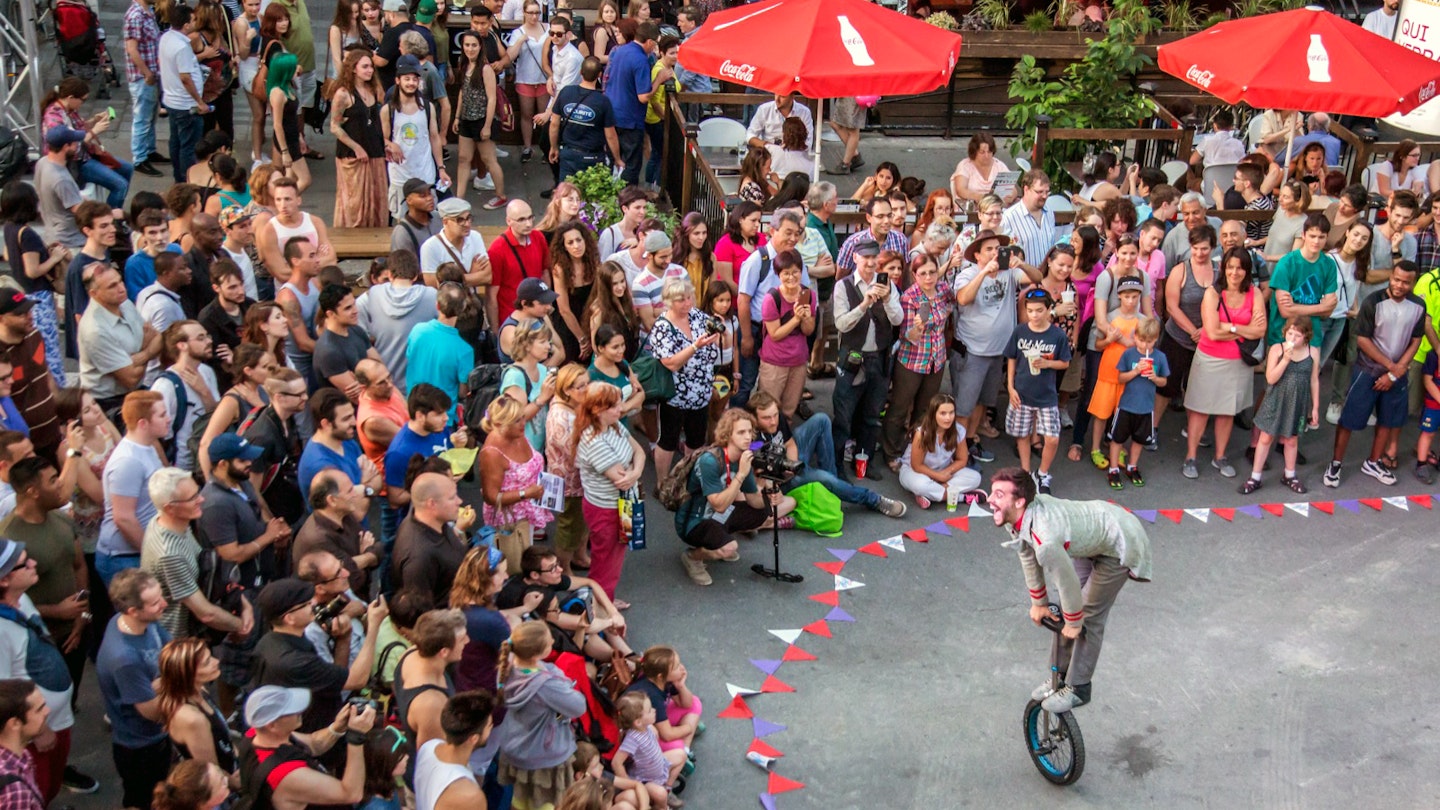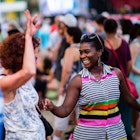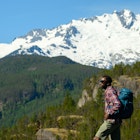In the Saint-Michel neighborhood of Montreal, a collection of buildings make up a kind of 'Cirque City.' It’s here you’ll find the National Circus School, the headquarters of Cirque de Soleil – and the home of TOHU, a year-round dedicated circus-arts venue that also hosts the Montreal Cirque Festival, celebrating its 10th anniversary in July 2019.
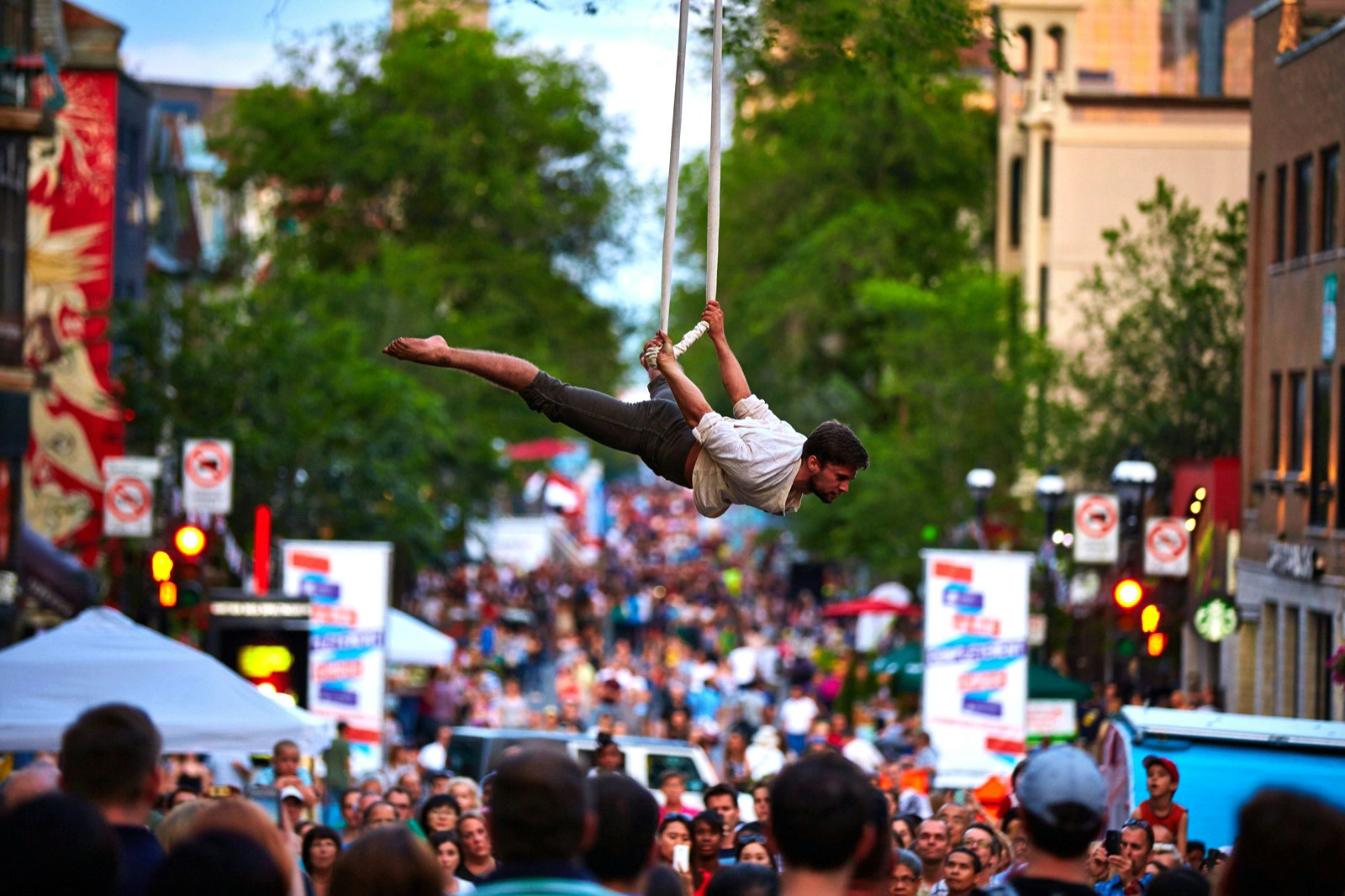
Chaos and creation
From July 4th-14th 2019 the streets around Rue St Denis will come alive with circus performers, free shows, demonstrations and sheer exuberance. More than 400,000 people travel to Montreal every July for the festival. The celebration is the first North American international festival of the circus arts and features performances from around the world, including renowned troupes like Les 7 Doigts.
But TOHU is about more than a celebration of the circus arts. It’s also a community cultural outreach program with a goal to connect with and involve local residents. The area of Saint-Michel is economically deprived and has a 12.3 percent unemployment rate – much higher than the rest of Montreal at 5.5 percent. That’s one of the reasons the organizers offer discounts and 400 free tickets per season to locals.
The name comes from a Quebecois circus saying – 'tohu bohu.'
'We say "it was all kinds of tohu bohu,"' says Stéphane Lavoie, Executive and Programming Director of TOHU. 'It’s the chaos before creation.'
According to Lavoie, inviting the community to experience Cirque is vital to the success of TOHU. 'We are here to build a community circus, not to only sell a circus ticket,' he says.
Each night of the festival, a free show – Les Minutes Complètement Cirque – moves through the streets as 32 acrobats use the natural environment to tumble, climb and astonish. The audience moves with them in a magical, musical parade, following red umbrellas to Les Jardins Gamelin (a public park). Once the crowds have gathered, a full show called ‘Candide’ is performed on an enormous acrobatic arch.
These free performances have become the signature of the festival, as the artists transform the city into a colorful, immersive and constantly moving work of art. One of the performances during the procession features a play on the traditional stacking chairs act, except the chairs have been replaced by a mobile of stools – precariously balanced 45 feet in the air. The performer at the top of this unstable pile is in a handstand. A quick inspection during rehearsals confirms it … these stools are just balanced, not attached or affixed in any way.
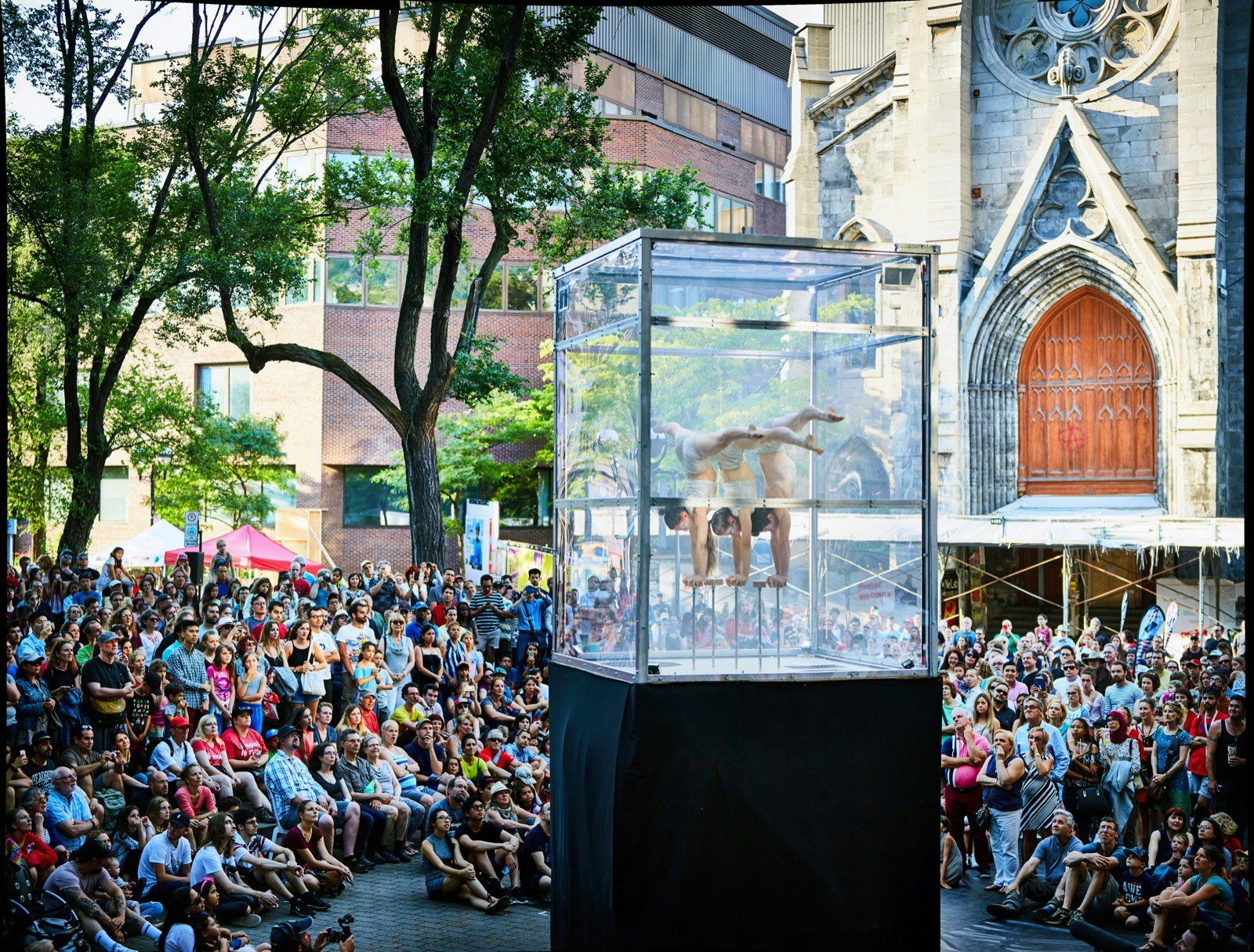
Working without a net
There are no understudies, no backup plans, and rain can cancel the show. In fact, in 2018 a heatwave caused one performance to be scrapped. After three weeks of intense rehearsals, all the performers can do is wait to see what will happen.
Anthony Venisse, the choreographer and stage director of 'Candide' (and an aerial acrobat and former clown) knows only too well the mix of excitement and pent-up nervous energy preceding a live show.
'The acrobats are craving to perform,' he says. 'They bring young creative energy to every show.'
Part of Venisse's role is to temper some of that ambition and make sure every trick and performance is safe. He tries out all lock holds beforehand and rehearses for long hours with the troupe in the preceding weeks. 'I am like the conductor who makes the whole orchestra play and arrive on the same note at the same time,' he says. But he admits for circus performers, the danger is often part of the appeal: 'For aerial people, this is where the buzz is, in the risk.'
According to Venisse, once at Les Jardins Gamelin the performers will slide down silks hanging from the 60-foot arch, far higher than any indoor theater could allow.
'Because we are outdoors, the sky is the limit, literally,' he says.
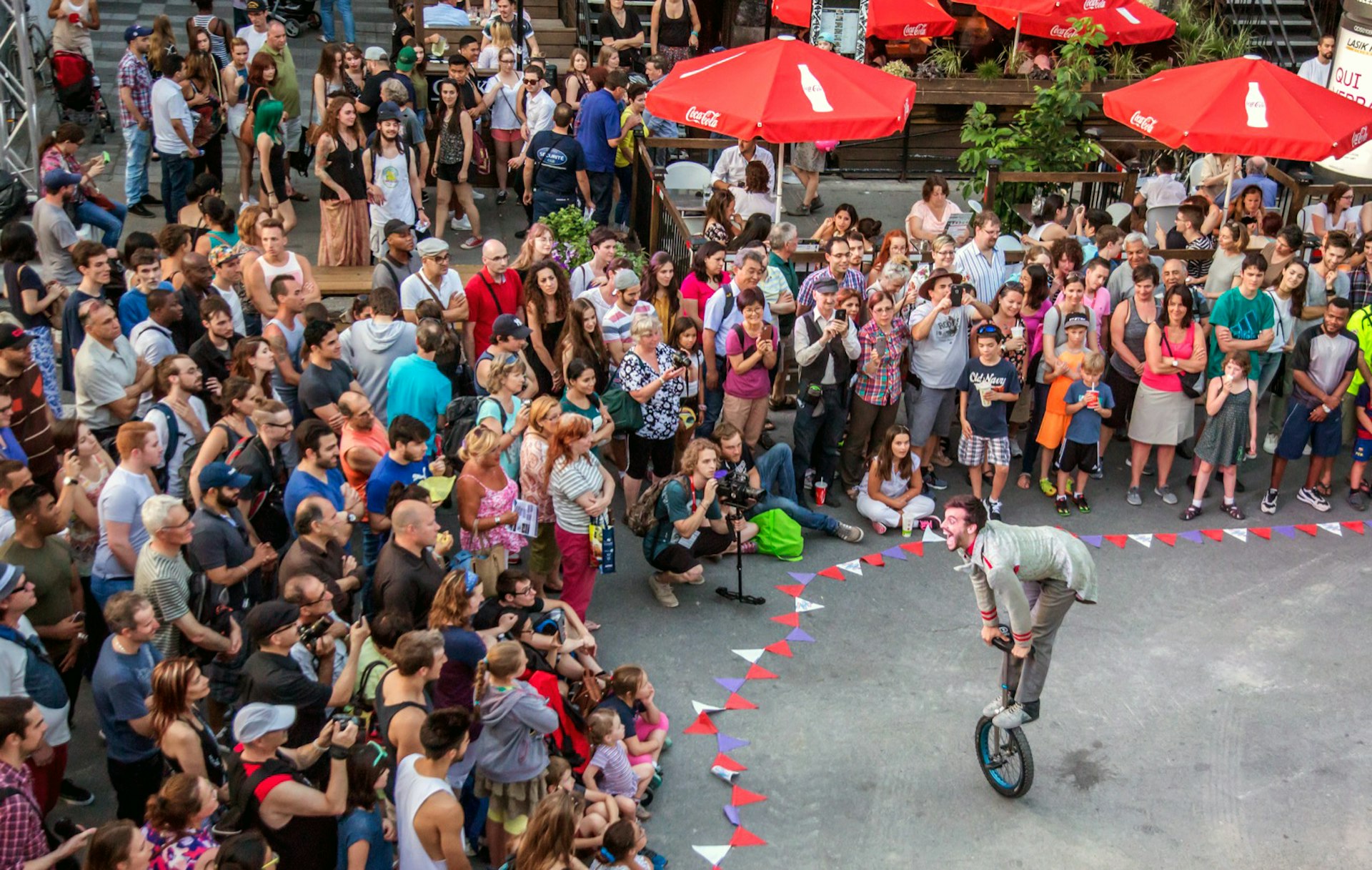
Circus sights make up a vision
All over the city, districts and neighborhoods put on their own one-off or multi-day cirque activities and family-friendly events to celebrate Montreal's cultural art form.
Nadine Marchand, Director of the Montreal Cirque Festival/Montreal Complètement Cirque has been with the festival since its inception. 'There was something missing (before this festival,)' she says. 'A meeting for all the circus players in the world – this was the vision for the festival. We wanted to create a circus rendezvous every summer.'
For Marchand, a good show always blends performance with emotion – and it is the audience participation that makes the festival so special. 'The Cirque comes from the street,' she says. 'The proximity to the audience is very important.'
Each year she enjoys the show anew, through the wondered eyes of the audience. As performers dangle from buildings, juggle at stop lights and walk a tightrope across the street, they transform the ordinary into a magical wonderland.
'We are a gang of old friends,' she says. 'We meet and invade the environment and the architecture.'
The planning for the next year’s festival begins before any performers have taken a bow. As Marchand says, 'The circus is a trademark of Montreal.' And the show must go on!
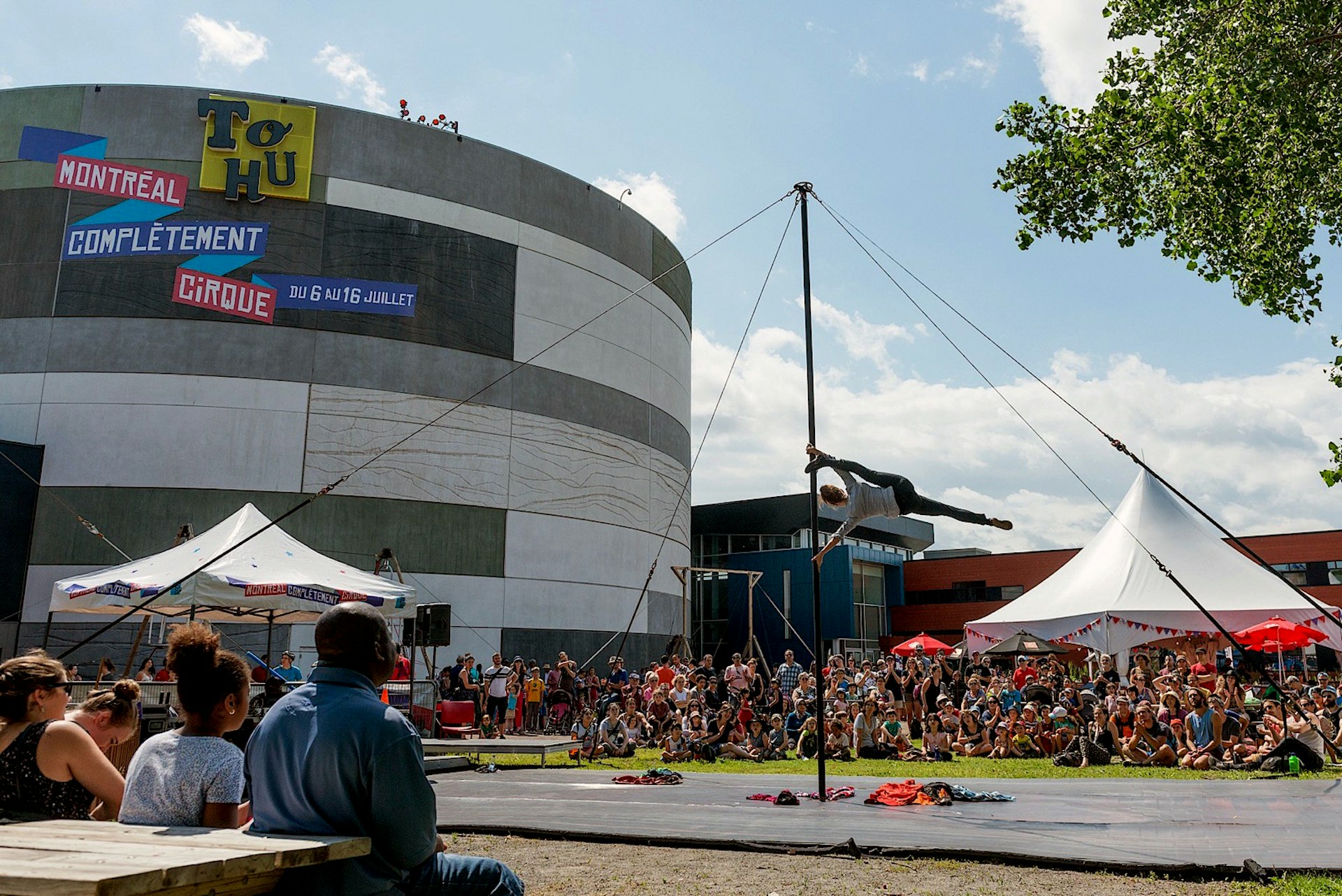
Montreal Cirque Festival / Montreal Complètement Cirque
When: July 4th-14th
Where: The St. Denis neighborhood of Montreal, Quebec; TOHU headquarters at Jarry Street East; Across the city at various other events.
Costs: There are lots of free shows and events during the festival with passes available to buy for indoor performances. A three-show pass starts at $90 CAD ($68.50 USD) whereas one-off performances cost from $29 CAD ($22 USD) and up.
Beyond the festival: Be sure to visit TOHU for circus exhibits and artifacts, tour the gardens and take part in fun circus-themed activities.
https://shop.lonelyplanet.com/products/montreal-and-quebec-city-guide-4

